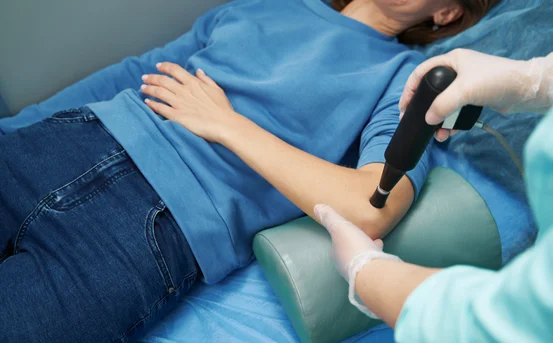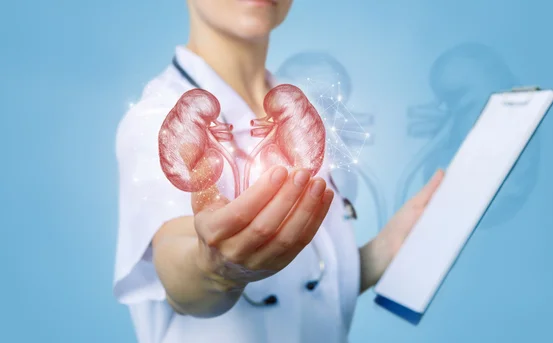Symptoms indicating epigastric hernia repair surgery may seem harmless at first, but ignoring their symptoms can lead to complications that require surgical intervention. These hernias occur in the upper abdomen, typically between the breastbone and the navel, when fat or tissue pushes through a weak spot in the abdominal wall. While small epigastric hernias might be asymptomatic, larger or more severe cases often present with noticeable symptoms that may warrant epigastric hernia repair surgery.
Early symptoms of an epigastric hernia may seem mild such as a small, painless bulge but over time, these signs can worsen. If left untreated, a simple hernia can grow larger, become painful, or even lead to serious health problems like tissue strangulation, which requires emergency surgery. Recognizing the warning signs early is key to preventing these complications and preserving your quality of life.
What Is an Epigastric Hernia?
An epigastric hernia is a protrusion of fat or tissue through a weakened area of the abdominal muscles in the upper stomach region. These hernias are more common in men than in women and can occur at any age, including in newborns. Although often small, these hernias can increase in size over time and cause pain, especially with activity or straining.
Symptoms Indicating Epigastric Hernia Repair Surgery
Early detection of symptoms indicating epigastric hernia repair surgery is essential for proper treatment. In many cases, mild hernias may be monitored by your doctor, but symptoms that worsen or interfere with daily activities are often a sign that hernia repair surgery is needed.
Let’s look at the most common symptoms that indicate the need for surgical intervention.
Visible Lump in the Upper Abdomen
One of the most telling signs of an epigastric hernia is a noticeable bulge or lump in the upper abdomen, especially between the rib cage and the belly button. This lump may be more prominent when :-
-
Standing
-
Coughing
-
Lifting heavy objects
-
Straining during bowel movements
The bulge may disappear when lying down, but if the hernia becomes trapped (incarcerated), it can remain visible and painful. A persistently noticeable or enlarging lump often requires surgical repair to prevent complications.
Persistent or Sharp Abdominal Pain
Pain is a critical symptom indicating that the hernia may be worsening. Patients commonly experience :-
-
Aching or burning sensation near the lump
-
Discomfort when bending over or lifting
-
Sharp pain when straining or exercising
If the pain becomes constant or severe, it could be a sign that the hernia is pressing on surrounding tissues or becoming incarcerated. This condition needs timely medical assessment, and surgery is usually recommended to relieve pain and avoid tissue damage.
Nausea and Vomiting
Though not always present, nausea and vomiting may suggest that part of the intestine is trapped within the hernia. This is a medical emergency known as strangulated hernia, which cuts off blood supply to the tissue. Warning signs include :-
-
Severe nausea
-
Repeated vomiting
-
Sudden, worsening abdominal pain
-
Discoloration around the hernia site
In such cases, emergency surgery is the only option to prevent serious complications like intestinal damage or infection.
Discomfort After Meals
Patients with epigastric hernias sometimes report feeling uncomfortable or bloated after eating, even if the meal is small. This symptom occurs because the hernia may slightly interfere with digestion or place pressure on the stomach. Symptoms include :-
-
Bloating
-
Fullness
-
Indigestion
-
Upper abdominal cramping
If this discomfort becomes consistent or worsens, especially after food intake, it could indicate the need for surgical correction.
Difficulty with Daily Activities
If your hernia starts interfering with your daily life whether it’s pain during walking, working, or exercising it may be time to consider surgery. Functional limitations caused by the hernia include:
-
Inability to bend or lift comfortably
-
Frequent rest breaks due to abdominal discomfort
-
Avoiding physical activity due to pain or bulging
A hernia that affects mobility or quality of life is no longer a minor issue and should be evaluated for repair.
Skin Redness or Discoloration Over the Lump
Skin changes such as redness, warmth, or a bluish hue around the hernia site may suggest strangulation or infection. These symptoms are urgent red flags requiring immediate medical attention. Delaying treatment can lead to serious health risks including tissue death or sepsis.
Tenderness on Touch
If your hernia becomes sensitive or painful when touched, it may indicate inflammation or complications beneath the surface. Tenderness suggests the hernia is under pressure or becoming irritated by surrounding organs or tissues. This is a common symptom surgeons consider when deciding if a repair is necessary.
When Is Epigastric Hernia Repair Surgery Recommended?
Epigastric hernia repair surgery is usually advised when :-
-
The hernia is large or growing
-
Pain is persistent or worsening
-
There are digestive disturbances (nausea, vomiting, bloating)
-
The hernia interferes with daily activity or exercise
-
Signs of strangulation or incarceration are present
Surgery is the only definitive way to fix the defect in the abdominal wall and prevent recurrence or complications.
What Does the Surgery Involve?
Epigastric hernia repair surgery can be performed using either :-
-
Open Surgery :- A single incision is made to access and repair the hernia with stitches or mesh.
-
Laparoscopic Surgery :- A minimally invasive technique using small incisions, a camera, and surgical instruments to fix the hernia.
Your surgeon will recommend the best approach based on the hernia’s size, location, and your overall health.
Recovery After Surgery
Recovery is typically smooth and quick, especially with laparoscopic repair. Most patients can return to light activities within 1–2 weeks, with full recovery expected in about 4–6 weeks. Post-surgery care includes :-
-
Avoiding heavy lifting
-
Taking pain medications as prescribed
-
Keeping the incision area clean
-
Following up with your surgeon
Following your doctor’s post-operative instructions can help ensure a full recovery and reduce the risk of recurrence.
Conclusion
An symptoms indicating epigastric hernia repair surgery might seem harmless at first, but it can grow and lead to significant discomfort or even life-threatening complications. If you’re experiencing any of the symptoms mentioned especially persistent pain, visible bulge, or nausea it’s time to seek medical advice. Prompt diagnosis and surgical repair can prevent long-term issues and help you return to a pain-free, active lifestyle.























